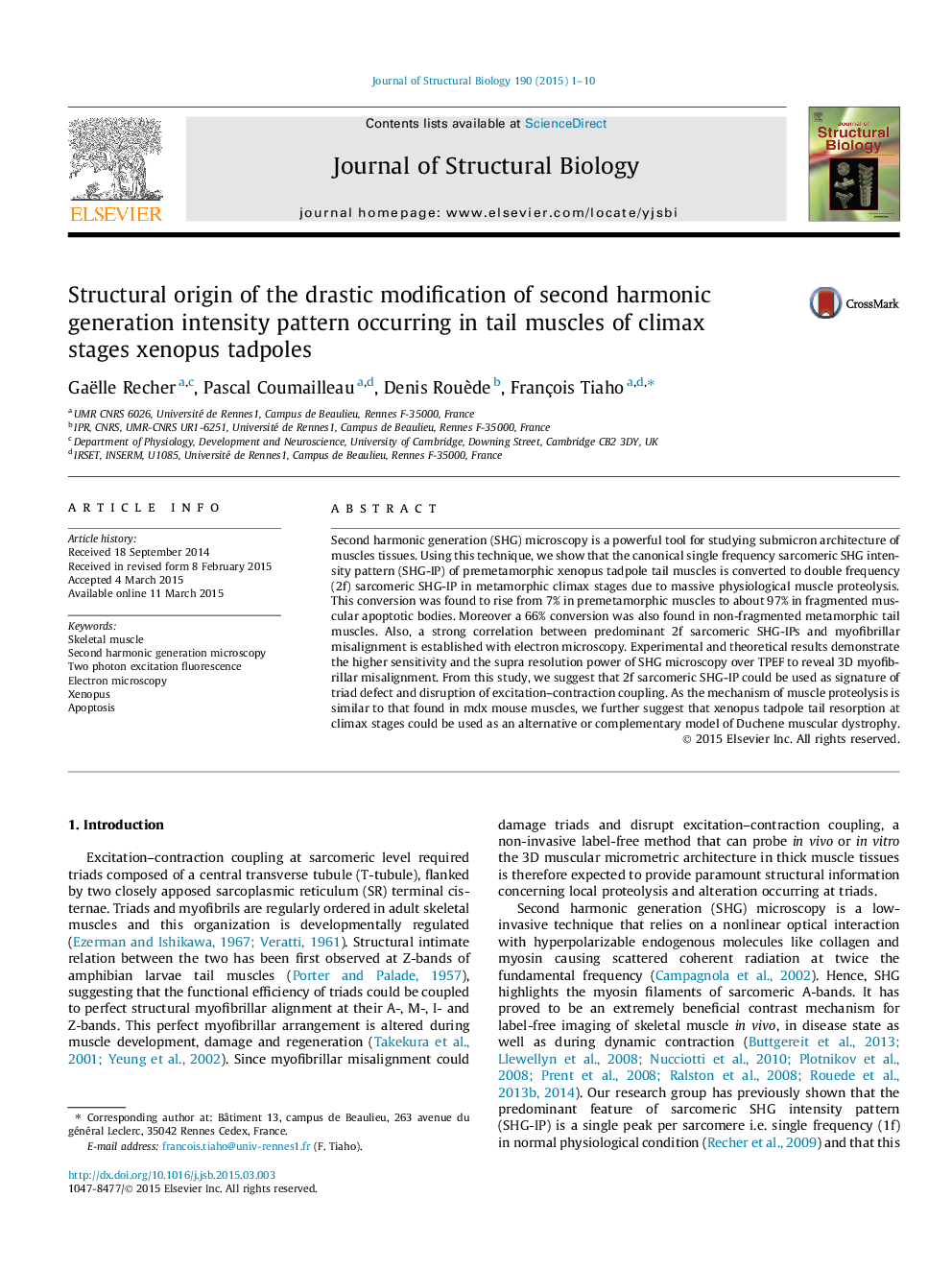| کد مقاله | کد نشریه | سال انتشار | مقاله انگلیسی | نسخه تمام متن |
|---|---|---|---|---|
| 5913917 | 1162710 | 2015 | 10 صفحه PDF | دانلود رایگان |
عنوان انگلیسی مقاله ISI
Structural origin of the drastic modification of second harmonic generation intensity pattern occurring in tail muscles of climax stages xenopus tadpoles
دانلود مقاله + سفارش ترجمه
دانلود مقاله ISI انگلیسی
رایگان برای ایرانیان
کلمات کلیدی
موضوعات مرتبط
علوم زیستی و بیوفناوری
بیوشیمی، ژنتیک و زیست شناسی مولکولی
زیست شناسی مولکولی
پیش نمایش صفحه اول مقاله

چکیده انگلیسی
Second harmonic generation (SHG) microscopy is a powerful tool for studying submicron architecture of muscles tissues. Using this technique, we show that the canonical single frequency sarcomeric SHG intensity pattern (SHG-IP) of premetamorphic xenopus tadpole tail muscles is converted to double frequency (2f) sarcomeric SHG-IP in metamorphic climax stages due to massive physiological muscle proteolysis. This conversion was found to rise from 7% in premetamorphic muscles to about 97% in fragmented muscular apoptotic bodies. Moreover a 66% conversion was also found in non-fragmented metamorphic tail muscles. Also, a strong correlation between predominant 2f sarcomeric SHG-IPs and myofibrillar misalignment is established with electron microscopy. Experimental and theoretical results demonstrate the higher sensitivity and the supra resolution power of SHG microscopy over TPEF to reveal 3D myofibrillar misalignment. From this study, we suggest that 2f sarcomeric SHG-IP could be used as signature of triad defect and disruption of excitation-contraction coupling. As the mechanism of muscle proteolysis is similar to that found in mdx mouse muscles, we further suggest that xenopus tadpole tail resorption at climax stages could be used as an alternative or complementary model of Duchene muscular dystrophy.
ناشر
Database: Elsevier - ScienceDirect (ساینس دایرکت)
Journal: Journal of Structural Biology - Volume 190, Issue 1, April 2015, Pages 1-10
Journal: Journal of Structural Biology - Volume 190, Issue 1, April 2015, Pages 1-10
نویسندگان
Gaëlle Recher, Pascal Coumailleau, Denis Rouède, François Tiaho,